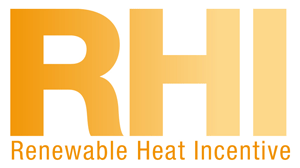At South West Energy Services, we provide constant updates of changes to industry funding and regulation. There have been some changes to the RHI for 2016. Below is a summary of the changes from Ofgem.
1. Green Deal Assessments
Currently we require applicants to the domestic RHI to have a Green Deal Assessment (GDA). This is to provide them with information about the efficiency measures that are suitable for their homes. This initially applied to all applicants but Registered Social Landlords (RSLs) were made exempt from this requirement in February 2015.
It was announced in July 2015 that there would be no further funding to the Green Deal Financing Company. This, alongside consistent feedback that a GDA is an unnecessary burden to scheme participants, has resulted in us changing the Regulations by removing the need for a GDA as an eligibility requirement for the Domestic RHI. Applicants will still need to meet minimum insulation requirements of loft and cavity wall insulation and provide a valid Energy Performance Certificate (EPC) that is no more than 24 months old.
2. New Build Properties – 183 Day Occupancy
The domestic RHI requires that if a property is occupied for less than 183 days, in a 12 month period, a heat meter must be installed to measure renewable heat use and determine payments, instead of payments being based on the annual heat demand specified on the property’s EPC.
This occupancy requirement ensures that the Domestic RHI delivers value for money for the taxpayer by not overpaying for renewable heat systems installed in properties that are not continuously occupied (for example, second homes).
This has resulted in the unintended consequence of eligible new self-builder properties having to wait 183 days prior to scheme application or installing heat meters as they are unable to provide evidence that they have lived in their homes for at least 183 days in the previous 12 months.
To overcome this, we are amending the regulations to make eligible new build properties exempt from the 183 day occupancy requirement in the 12 months prior to application to the scheme. Thereafter, these participants will be subject to the standard ongoing obligations which include the annual declaration that the property has been occupied for 183 days or more in the last 12 months.
3. Tariff Indexation
Tariffs in the both the Domestic and the Non-Domestic RHI are subject to an annual adjustment in line with inflation to take into account changing prices in the economy. The indexation rate used to date has been the Retail Prices Index (RPI).
RPI is no longer classified as a National Statistic, therefore, for all applications accredited on or after 1 April 2016 tariff adjustments will be linked to the Consumer Price Index (CPI). CPI is already widely used across Government, for example for the uprating of pensions, wages and benefits. Current scheme participants will continue to have their tariff linked to RPI.
4. Degression Triggers
Spending in the RHI scheme is controlled through the degression mechanism. This operates by applying an automatic reduction to a technology tariff if pre-determined expenditure trigger points are exceeded. Expenditure is assessed every 3 months.
Individual technology trigger points for the scheme are set out in the Regulations. Currently the Regulations only specify triggers up until the 31 January 2016 assessment date; the next assessment against expenditure is due 30 April 2016, which will inform any tariff reductions that take place on 1 July 2016. In these Regulations we updated the expenditure trigger points for the scheme until the 31 January 2017 assessment date.



Leave a Reply
Want to join the discussion?Feel free to contribute!